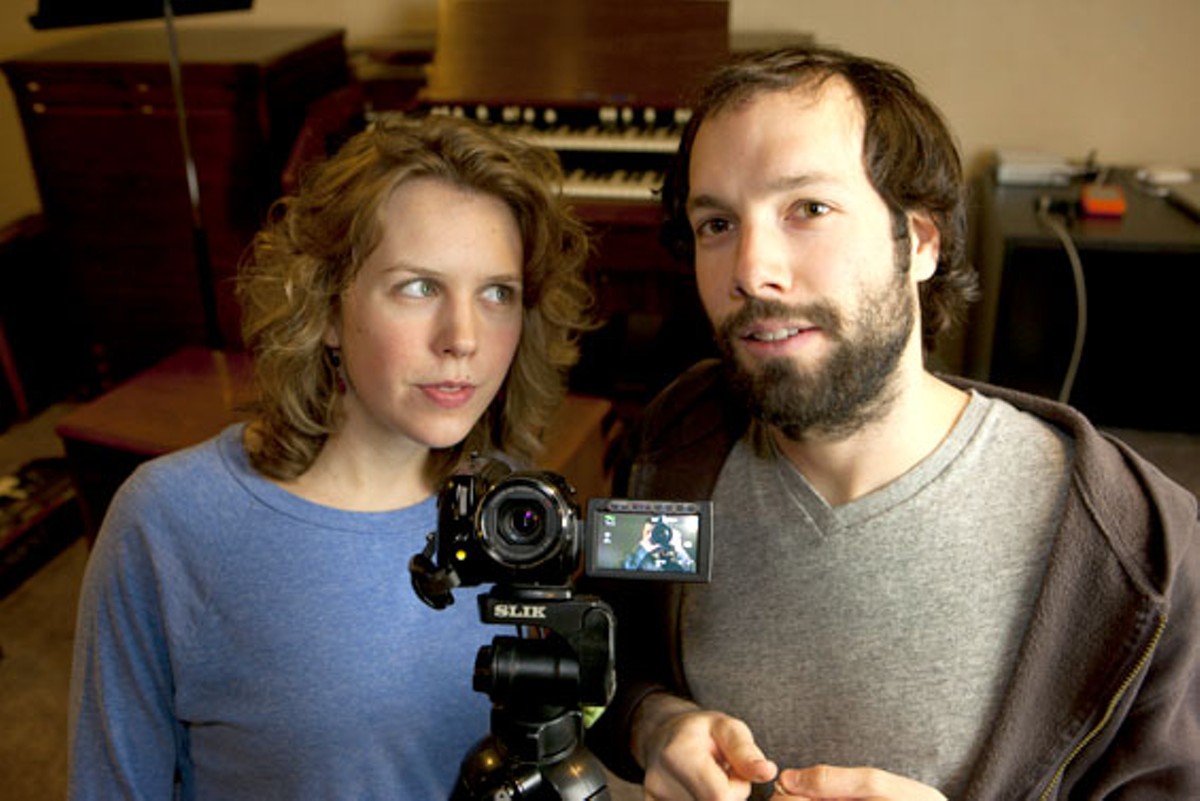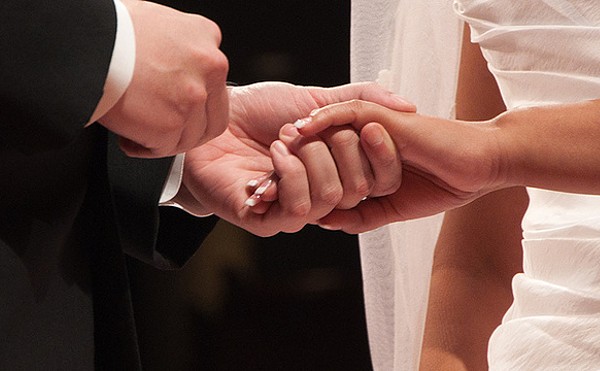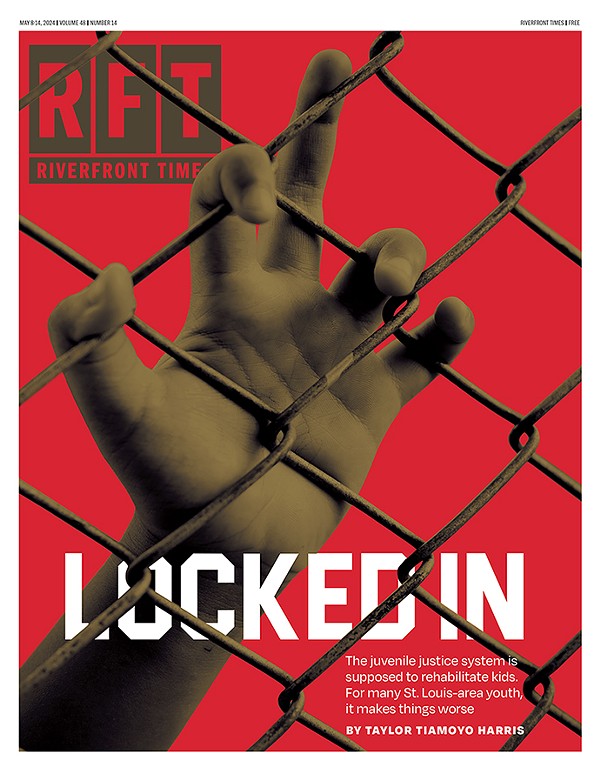On an improbably sunny midwinter day, amid green pastures and meandering cows, two unassuming musicians are waging a revolution against the established order of the recording industry.
Here, inside a dim shed formerly used as a dog kennel, Jack Conte and Nataly Dawn are recording their next album as Pomplamoose — a musical project that is half traditional band, half social-media experiment and entirely an insurrection against how things are normally done in the music business.
This insurrection, by the way, is often prosecuted in pajamas. That's just one of the many perks that come with working according to your own rules and working at home. The central theater of Pomplamoose's campaign, the renovated shed and nondescript ranch house in which Conte and Dawn record their music, sits on a spread in rural Sonoma County in Northern California. And aside from the sprawling collection of musical instruments housed here, and the youthfulness of the residents, this property stands out in another important way: It was purchased with money earned by selling MP3s on the Internet.
Yes, despite what you may have heard, it is actually possible to make money — a living, even — by selling songs online. That is, in fact, the only place you can buy the music of Pomplamoose, a band as striking for what it doesn't do as for what it does.
Pomplamoose doesn't release music on CD or any other physical media. The group has no deal with a record label. It also doesn't tour — in three years, it has played only three live shows, all of them in San Francisco. The band has no publicist or traditional manager; the only outside professionals it uses are a lawyer and an accountant. Conte and Dawn handle every other aspect of Pomplamoose themselves: arranging songs, recording and mixing tracks, editing video, posting new songs online and even marketing to new fans. And they retain a sense of humor through most of it.
Any list of Pomplamoose's appealing aspects would have to begin with the teasing, sarcastic and flirtatious relationship between Conte and Dawn. Their deadpan jokes and natural banter make viewing the band's "video songs" — which show all the instruments used in the song and no lip-synching — feel like more than just watching two talented musicians in a room. Filmed at home, the videos are two-thirds performance and one-third messing around. There's no psychedelic footage or legions of writhing dancers. There's just Conte and Dawn recording, flashing homemade signs, eating cereal and making faces.
Yet despite the levity — or, actually, because of it — Pomplamoose has attained a level of success that is rare for any independent artist, and unique in the way it was achieved. The band's releases have found their way onto the Billboard charts and major television networks. Its videos have been watched millions of times. And it sells digital songs at a rate that provides Conte and Dawn with a pretty desirable lifestyle: instruments galore, a spacious home and studio set among rolling hills and the freedom to do nothing but write and record their music — just the way they want to.
An immense blue sky is begging for attention, but inside the darkened studio, today's work is grinding along slowly. Conte's long, narrow frame is bent over the keys of a black Bösendorfer grand piano that seems to take up the entire room. He's trying to nail a small piano part for a new original song. And he's been trying for about half an hour now.
"Euugh!" A bellow of frustration booms through the room after Conte misses another take. The passage he's recording is only about fifteen seconds long, but it requires a complicated series of notes played with precise timing — slightly behind the beat to underscore the jazzy poise of the song. Last time he played too quickly, so he hops off the piano bench and dashes over to a laptop, which is connected to the video camera recording him. He hits three buttons on the laptop's keyboard and looks across at Dawn, who is sitting, her doll-like face placid, in front of another laptop that serves as an audio recording console. With the camera rolling and the recording gear ready, Conte yanks his headphones back around his head and plays the passage for yet another time.
As he pounds the keys, Conte launches his neck out over the open guts of the piano. Its bronze strings, as thick as adult fingers at the lower registers, consume the room with a giant sound, barely under control. The veins raise up on Conte's neck as he sticks out his jaw and tightens his mouth into an oval. His head tilts mechanically in time with the swinging groove of the song. When Conte finishes muscling through the take, he launches off the bench, slightly out of breath.
"Oh, that feels great!" he shouts, rushing over to Dawn. They lock eyes, her sitting, him standing, as the take plays back. But at the end, neither of them is satisfied.
"Let's keep it as a 'maybe,'" he says, already heading back to the piano and video camera for another try.
"How often do 'maybes' get used?" she mutters to no one in particular.
"Never," he shoots back. "But they take the pressure off."
Pomplamoose is dealing with more pressure now than Conte or Dawn ever imagined. The project began as an accident: About a year after they met and started dating in college, the couple made their first video song. (Both had, and still have, other musical projects.) The combination of accessible pop, rich instrumentation and the chemistry between Conte and Dawn found an enthusiastic viewership on YouTube. The project grew as they cultivated their songs and personalities into a signature style — one that involved disheveled, pajama-clad performances in Conte's childhood bedroom. Their popularity exploded in 2009, after they hit upon the unoriginal but savvy idea of recording covers of big-time pop hits. Up until then, Pomplamoose's catalog had been all originals and lesser-known covers. And, after the epidemic popularity of their version of Beyoncé's "Single Ladies (Put a Ring on It)," came the biggest surprise of all: Fans wanted to buy Pomplamoose's MP3s in large numbers — large enough for neither of them to need a day job, and for Conte to buy a house while still in his mid-20s.
Soon major labels came calling, and industry professionals were trying to drag Pomplamoose into the machinery of the music business. Other artists who found fame through YouTube, such as OK Go and Justin Bieber, had assimilated into the world of the major labels, and Pomplamoose got offers to do the same. But Conte and Dawn said no, thanks. They didn't want to work with big-name producers at major studios. They didn't want to share their income with a record company. And, most importantly, they didn't want anyone messing with how they made music.
"I've dealt with a record label in the past," Conte says. "The label breathes down your neck, changes your stuff, changes your vision, changes your direction, hires your producer, picks your studio, picks your instruments, picks your sound, picks your freaking guitar strings."
So Pomplamoose didn't sign a deal and in the process became something other than a regular pop band — and something different from the daily viral sensation. Offered a chance to join the crumbling empire of the recording industry, Conte and Dawn instead decided to pioneer an alternative to it. They ended up forging a new path to a sustainable, independent career in music.
"It shows that there's another way that an artist can be successful outside the traditional way," says Tom Silverman, a former record executive and label founder who has studied Pomplamoose. "They're thinking out of the box. They found a way to generate enough revenues to live comfortably doing what they want to do."
Yet for all their idealism, neither Conte nor Dawn believed that merely selling MP3s online — and getting some revenue from YouTube each time a video was watched — would finance a career for long. Other revenue streams would have to be found — ones that wouldn't force them to compromise their vision.
Most musicians, especially up-and-coming ones, depend on touring to make a living. But Pomplamoose isn't set up well for live shows. The band has only two members, and its songs use dense arrangements that would require many more instrumentalists to reproduce onstage. Pomplamoose also lacks live experience — a gap that was glaringly obvious at its third-ever live show on New Year's Eve in San Francisco. Adding three members helped fill out the instrumentation, but Conte and Dawn lost much of the quirky character and sonic dynamics that illuminate their work. Onstage, with Dawn seated and Conte standing behind a keyboard, their attention was largely on playing their songs, rather than performing them, as an experienced live band learns to do. Pomplamoose seemed to try to please existing fans, not seduce new ones. It didn't make the band seem any more exciting that it was followed by the Dresden Dolls, a cabaret-punk outfit whose two members are masters of live theatrics.
Bringing enough musicians on the road to fully perform Pomplamoose songs would greatly dilute Conte and Dawn's tour income, anyway. But another revenue stream presented itself last fall when automaker Hyundai contacted the band about doing some TV commercials. Company executives had seen Pomplamoose's cover of the '50s classic "Mr. Sandman" and wanted similar-sounding versions of Christmas songs for a series of holiday ads.
Neither the car company nor the pop band had any idea that they were planning one of the most successful — and infamous — TV ads of the 2010 holiday season. The deal would give Pomplamoose a chance to increase its fan base and make some real money. But the ads also put its DIY image at risk — and, for some, cast the inborn frivolity of Conte and Dawn's relationship in a terribly unflattering light.
"Everyone tells me to put a ring on it," Conte quips, tossing a look at his girlfriend. They are standing in their kitchen on a recent afternoon, warming up leftover Chinese food while trying to sort out their personalities from the popularity of their band. Conte and Dawn aren't married or engaged, and that frustrates a great number of Pomplamoose fans — especially since the group's best-known cover is a treatise on the pitfalls of failing to propose.
In Dawn's lyrics, many fans see, and sometimes imagine, subtle messages to Conte. After the band released "Expiration Date," which she had written about a friend's breakup, mistaken interpretations of the song quickly arrived. "I was getting messages on my personal YouTube page: 'Hey, I hope everything's OK with Nataly; I know you guys are having some trouble right now,'" Conte remembers with a chuckle. "It's a little weird, but we did it to ourselves."
Pomplamoose's music frequently gets labeled "indie pop," but Conte and Dawn studiously avoid clinging to any single genre. Their vehicle to YouTube fame was covering Lady Gaga's "Telephone" and "Single Ladies" — videos that now have more than six million and seven million views, respectively. But Pomplamoose doesn't cover a song in the typical sense. Rather, the band reimagines it, surrounding the original melody with different harmonies, rhythms, instruments, lyrics — and, usually, gags. In Pomplamoose's decidedly chilled-out "Single Ladies," Dawn sings over a bridge of complex minor-key chords: "Don't make me sing this part of the song/The lyrics are so bad/So we're going to skip ahead/To the 'Single Ladies' part instead." Pray that Beyoncé ever attains such candor.
Mainstream pop covers were really just a way for Pomplamoose to gain fans. Dawn and Conte's focus is on their originals, which usually receive far fewer views on YouTube. (The most popular has about two million.) These songs drift among musical styles, threading a deep appreciation for vintage pop and jazz through organ-driven rock, funky R&B and delicate folk. Nearly every one, whether a cover or original, employs sophisticated arrangements and technical proficiency that reveal the pair to be talented musicians. But Pomplamoose songs rarely make compelling emotional statements, and few are what you'd call thrilling. While a certain chemistry often carries the music, the overall pleasantness can also make it feel tired and one-dimensional.
Conte's parents both performed jazz; he grew up playing piano, later picked up the drums and studied music production at Stanford. He's a musical Swiss Army knife, the kind of person who can write an arrangement for string ensemble, lay down a densely syncopated drum track and perform complex passages on the piano with aplomb. Conte has long worked as a record producer for friends' bands, and after meeting Dawn at a gig in college, he offered to produce her debut album, too. But their initial stab at a musical relationship was a disaster. While Conte is enthusiastic and outspoken — and was used to working with others who, like him, would voice an opinion on something the minute they heard it — Dawn rarely offers an emphatic view one way or another. "Later on, I just learned that Nataly doesn't get excited — about anything," he says, only half-jokingly. But after figuring out how to communicate, the two discovered they had extremely complementary musical abilities.
This skillfulness partially fuels Conte's distaste for the practices of the recording industry. Unlike many up-and-coming musicians, he can do everything — writing, performance and production — himself and at a professional level. He's good enough that he was asked to try producing a song on the latest album from Cee Lo, who recently had a major hit with "Fuck You." But, like a lot of talented independent artists, Conte balked when Cee Lo's label began telling him how the song should sound. "I wrote this beautiful string arrangement — it was 32 tracks of strings," he recalls. "Beautiful chords! I loved it! But we sent it back to the label, and they were like, 'We don't like this note — can you change that chord?' And I was like, 'No, I can't change that chord. It's the whole point of this arrangement.' So they didn't use the track."
Dawn, by contrast, had no formal training. But her father is a preacher, so she grew up singing in church choruses, and playing piano and guitar, before discovering a love for the bass in her late teens. Now, she develops Pomplamoose's bass lines and guitar parts and writes and sings all the lyrics. Her delicate voice seems to snatch complex melodies out of the air as if they were hanging there, already fully formed. She sometimes sings in French — a legacy of the eight years she lived in France and Belgium between her early childhood in Southern California and coming to college in the Bay Area. (The band's name, in fact, is a phonetic spelling of the French word for grapefruit.)
Dawn also handles the editing of raw footage taken in the studio (or bedroom, as used to be the case) into Pomplamoose's signature video songs. While music videos are often excruciatingly self-serious affairs, these are casual and laced with witty humor. In "Telephone," she spliced in footage of herself and Conte mocking the original video's extended dance scenes and inserts a shot of Conte drinking from a water bottle with a label that reads "shameless product placement" — a commentary on Lady Gaga's product-filled original. In their cover of Earth Wind & Fire's "September," the usual split-screens are interrupted with clips of an older woman dancing in high heels and a black dress. A second later, Conte's face is shown stretched into a smile next to a comic book-style speech bubble that reads, "That's My Grandma!"
The video song for "If You Think You Need Some Lovin'," Pomplamoose's most popular original, ends with Conte and Dawn hawking new band T-shirts into the camera. "They're really soft and smooth on my skin," Conte purrs, grinning through his shaggy beard. "'Cause I need silky smooth —"
"Jack's actually taken all of the T-shirts and rubbed them all over his body," Dawn muses flirtatiously into the camera.
"So you get double bonus when you buy a T-shirt," he continues, hardly suppressing a laugh. "Which is pretty awesome, because who doesn't want to smell like me?"
While most popular musicians create images or characters to inhabit, Conte and Dawn play themselves in Pomplamoose — albeit edited, less crass versions of the real thing. Their poop jokes and Home Depot shopping lists are cut, but otherwise, the Pomplamoose of YouTube is really them — with the result that, as Dawn puts it, "people liking our music is also linked pretty heavily to how much people like us."
On September 13, 2009, Kanye West suddenly interrupted the proceedings of the MTV Video Music Awards. Country singer Taylor Swift had just won the award for Best Female Video — an award West thought should have gone to Beyoncé for "Single Ladies." He pushed his way onstage during Swift's acceptance speech. "I'ma let you finish," he said, in what became an infamous pop-culture embarrassment. "But Beyoncé had one of the best videos of all time." He didn't know then that "Single Ladies" would go on to win Video of the Year.
Conte and Dawn had recently returned from visiting a friend, Julia Nunes, in Rochester, New York. Her breezy ukulele versions of Beatles songs were ranking higher than the original versions in YouTube searches — and getting lots of views. "We went there, and saw what was happening, and then said, 'We need to start doing some covers,'" Conte says. That became priority one: "We would just find a bunch of songs we liked, pick the one with the most hits on YouTube and cover it."
On September 17, four days after West interrupted Swift and near the height of public hysteria over the incident, Pomplamoose posted its cover of "Single Ladies" on YouTube. Conte and Dawn could tell right away that something was different. "It just started getting millions of hits," Conte says. This was when everything began to change.
Only a few months earlier, Dawn had finished her master's degree in French literature. She had planned to get a part-time job, but her parents agreed to pay her a stipend for six months. By this point, Pomplamoose was also selling MP3s on the E-junkie website. "Single Ladies" racked up views on YouTube and moved MP3s, and Conte and Dawn noticed that their original songs were also selling better. Five months out of college, thanks largely to "Single Ladies," Dawn was finally earning a living — albeit a meager one — through her music. She and Conte began to realize that Pomplamoose could be more than a serious hobby. It could be a career.
The next milestone for the band came in March, when Pomplamoose released Tribute to Famous People, an album of well-known covers that included "Single Ladies," "Telephone," "Beat It" and "Mister Sandman." This time, it was available at Apple's iTunes store. The Beyoncé cover had been a surprise, but Tribute launched Pomplamoose to a whole new level of fame and financial success. It sold about 30,000 tracks within the first month, according to Conte, a figure that translates into a payday of about $18,600. "We did have a movie moment, where we logged into our iTunes account and looked at our sales for that month and just fainted," he says. "It was really exciting."
Forging a musical career through social networks was a long-running passion for Conte. His college bands played the "be my friend on Myspace" game, with limited success. But he was at Stanford in 2005, when YouTube was founded, and quickly discovered an online community for which he was particularly well suited. Not only was he skilled in the medium — he got a contract job at Google making corporate videos after graduation and turned down an invitation to study film at the University of Southern California — but the community of musicians posting their stuff on YouTube held a special attraction. "It's not like every other social network, where it's a picture and your favorite movies and your favorite books — sort of bullshitty stuff," he says. "It got to be a great community, really supportive. I thought it was going to be a sort of Myspace-y business thing, and it turned out that it was something really special."
With the success of "Single Ladies" and Tribute to Famous People, it seemed Conte had finally found the path he was looking for — and independence was the key. For every $1 download Pomplamoose sells through E-junkie, the band gets 90 cents. Each 99-cent iTunes download nets Pomplamoose between 62 and 70 cents, with the store taking the rest. But if Pomplamoose were on a label, it would have to split that with the record company — and the company would get most of it. Deals vary, but under a common arrangement, the label would get 53 cents from each download, while the band would keep only about 9 cents. At those pay rates, Pomplamoose's breakout month in March 2010 would have earned it only $2,700.
With Tribute, Pomplamoose had built a sizable fan base, found a way to make a living playing music and even cracked the charts. So far at least, its revolution was working. But there was a problem: Selling songs online wasn't likely to provide the steady income Conte and Dawn would need to support themselves long-term. Both believe that the days when fans will actually pay for song downloads — instead of perceiving all music to be free — are numbered. And their MP3 sales spiked after a new release and fell off quickly thereafter. In order to last, Pomplamoose would need other ways to make money.
Watching Dawn in the opening seconds of one of Pomplamoose's Hyundai Christmas commercials, it is difficult to imagine the kind of hyperbolic anger and irritation the ad would cause.
Dressed in a gray sweater and a scarf, she sits in front of a microphone. The opening shot is cut quickly so that the car, while remaining still, appears to rotate behind her. As the ad continues, Conte and Dawn perform their usual diversions around the red sedan: He pops out of the trunk and throws fake snow. She eats cereal while leaning against a tire. They quarrel for the driver's seat.
Hyundai had been looking for more than just an existing song to use in an ad. It wanted a TV spot that would reproduce the feel of Pomplamoose's video songs. But Conte and Dawn wanted to make sure Hyundai didn't treat them like a label would. "I said, 'We can only do that when it's just the two of us in the room,'" he remembers. "'If we're going to do this, you guys can't be in the room.' They said, 'Great!' And at that point, we were like, 'Oh, you guys are cool.'"
Conte and Dawn shot the spots alone in their garage over three days, though Hyundai's producers watched via a live video feed. Dawn edited the footage and turned over the final version. She and Conte were more than pleased with the results. The ads started airing in late November.
The initial response was positive. The ads were generating a positive response, so Hyundai ran more. Then more. And more. Then, around mid-December, as the ads' rotation crossed over from frequent into ubiquitous, the backlash arrived.
"I've seen them on YouTube, and they seemed fine," wrote one viewer commenting on a blog post about Pomplamoose. "But now, seeing them five times an hour with their Hyundai commercial, I want to slit my throat and wrists."
The ads inspired streams of similarly negative comments across the Web, including on Pomplamoose's own YouTube page. Even a sportswriter at the Morning Call in Allentown, Pennsylvania, couldn't resist mentioning them. "Pomplamoose is the couple who did those annoying, musical Hyundai commercials that played over and over again during the Bowl games," one football story began.
Vitriolic comments fired at high volume — some calling Dawn and Conte hipsters, some calling them talentless and some calling for them to be creatively executed — were a new thing for Pomplamoose. But some negative reaction was predictable. Here was a band that had hoisted itself to fame solely by its own innovative means that was now shilling for an international automaker. And Pomplamoose wasn't just letting Hyundai use one of its songs, as it had in the past with Toyota and a few other companies. Conte and Dawn had deployed their entire aesthetic for the ads. The spots almost exactly reproduced the style of Pomplamoose's YouTube videos and prominently featured the couple. And even those who didn't object to the collusion of a radically independent band and a big car company found something to hate with the ads becoming a near-constant fixture on holiday television.
But the commercials, like Pomplamoose's career, were revolutionary. Criticism of the spots focused largely on their regularity and on whether the band had tainted its image by allying with a large corporation. But for Grant McCracken, an anthropologist at MIT who studies the intersection of culture and commerce, the ads reversed the usual process of companies "force-fitting" cultural content to sell their products. "It really is one of our first glimpses of somebody like Hyundai saying to them, 'You just do what you do, and we'll use just what you do,'" he says. "That's a pretty big development."
Still, McCracken says, Hyundai made a major — although not fatal — mistake by playing the ads so frequently. "There's something about this cultural form that makes repetition especially deadly," he says. "It was charming if you saw it X number of times, and once you'd seen it X-plus-one times, you were really done with it. You just can't tax whimsy without it becoming the opposite of whimsy."
For Conte and Dawn, the Hyundai ads were both a payday — "We're making a comfortable living; we don't worry about cash," Dawn says with a laugh, declining to get more specific — and a way to gain fans. Although they agree that the ads ran too frequently, by the end, they say the project also informed — and tested — a big idea of theirs: that working with big brands could help artists survive without any creative interference.
It's late afternoon at Pomplamoose headquarters, and the sun is falling slowly toward the hills in the west, casting spindly shadows over the two new Hyundais — a silver sedan and a black SUV — sitting in the driveway. These weren't part of the original deal. Hyundai simply let Conte and Dawn pick out the cars they wanted after the ads were finished, effectively giving them a bonus worth at least $50,000.
Inside the shed, Dawn is laying down vocal tracks for Pomplamoose's upcoming album. For the first time, she and Conte are planning to release a project the traditional way: posting it online on a certain date later this spring and then releasing a new video for a song off the album about every two weeks. They're also planning their first tour.
However those efforts turn out, the simple fact that Pomplamoose has gotten where it has, the way it has, holds important lessons for the music business, experts say. "In this world of standing alone on ability to grab attention and create enjoyment, [Conte and Dawn] are clearly stars," says Brian Zisk, an Internet music entrepreneur and social-media strategist. "Yes, [labels] know how to do expensive production. Yes, they know how to do expensive promotion — but these are all things that are no longer a real advantage. Artists can do more interesting things when they're not being managed by folks like the labels."
Whether this band's path will work for others is unclear. Certainly, the combination of musical skill, technical savvy and personal chemistry in Pomplamoose is rare. Conte sees a future, however, in which there will always be companies loaning artists money to make music.
"In truth, a label is nothing more than a corporation, and it funds artists," he says. "Why couldn't another corporation fund an artist? And instead of having Capitol Records at the bottom of your CD, it says Hyundai. Why not?" He says creative artists would still be free to choose which brands to work with, just as Pomplamoose has turned down licensing offers from McDonald's and Walmart. And independent musicians have less to fear from car makers and tech companies than from traditional labels: "HP doesn't know shit about music, and they don't pretend to know shit about music. Record companies don't know shit about music, but they pretend to know shit about music."
It's nearly dark inside the studio, apart from the photographic lights pointing at Dawn. Her face fills the viewfinder of the video camera, and she's fussing with her blond curls. Alone in this room, with only the pastoral afternoon outside, it's easy to forget that what gets recorded here will eventually be heard and seen by thousands, and perhaps millions, of people — or that it could one day be used to promote some large company.
Conte plays back the vocal track Dawn has just recorded, along with the rest of the song. Midway through one section, a sarcastic "you're funny" — a stray little tease from Dawn to Conte — is heard over an instrumental break. It sends a few giggles through the room. "Let's keep that in," she says with a grin, and they both nod. In the Pomplamoose revolution, some things may never change.






